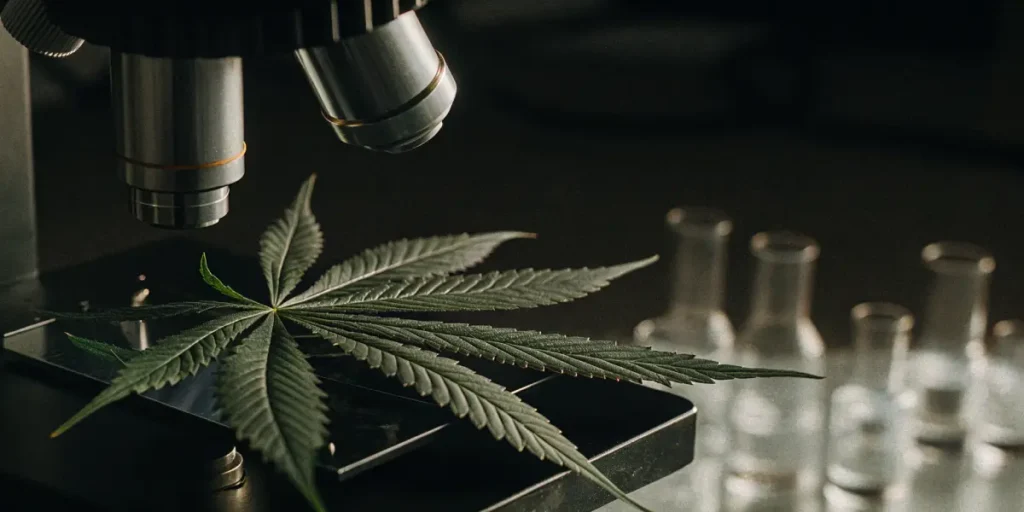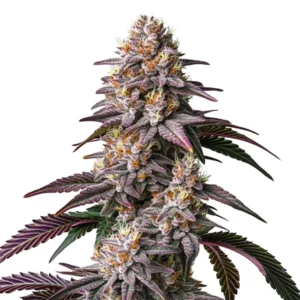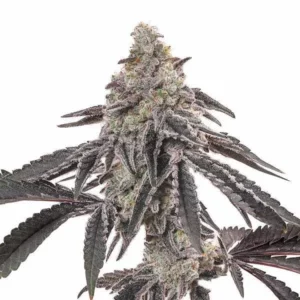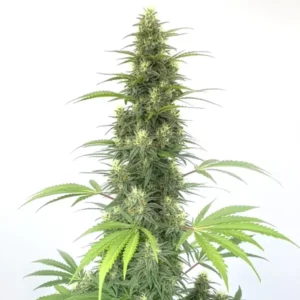
What Are Laticifers in Cannabis
When diving into the world of cannabis cultivation, one might stumble upon the term “laticifers.” But what are laticifers in cannabis? These specialized cells play a crucial role in the anatomy of the cannabis plant. They are responsible for producing and storing latex, a milky fluid found in many plants. In cannabis, this latex contains a variety of compounds, including cannabinoids and terpenes, which are essential for the plant’s potency and aroma.
Laticifers are like the unsung heroes of cannabis anatomy. They weave through the plant, forming a network that contributes to resin production. This is particularly important when considering the impact of laticifers on cannabis potency. The resin, rich in THC and other cannabinoids, is what gives cannabis its psychoactive properties. Without laticifers, the resin we cherish would be significantly diminished.
Recommended Strains
OG Kush
-
THC: 20% - 24%
-
Type of seed: Feminized
-
Phenotype: 45% Sativa / 55% Indica
-
Flavor: Citrus, Lemon
-
Day to flower: 8 - 10 weeks
Blue Dream
-
THC: 17% - 24%
-
Type of seed: Feminized
-
Phenotype: 50% Sativa / 50% Indica
-
Flavor: Berry, Blueberry, Mango, Sweet
-
Day to flower: 8 - 10 weeks
The presence of laticifers in cannabis is not just a botanical curiosity but a vital component of successful cultivation. For both novice growers and seasoned veterans, knowing how laticifers function in cannabis can lead to more fruitful harvests. They influence not only the plant’s strength but also its resistance to pests. By harnessing the knowledge of laticifers, growers can optimize the quality and yield of their crops.
Moreover, laticifers are integral to the plant’s defense strategy. By producing latex that contains cannabinoids and terpenes, they help deter herbivores and pathogens. This natural line of defense is crucial for maintaining plant health and ensuring a robust harvest, which is why knowing what are laticifers in cannabis is essential for any cultivator aiming for excellence.
Exploring the function of laticifers further reveals their contribution to the plant’s environmental adaptability. As cannabis plants encounter various stressors, laticifers’ ability to quickly release their stored compounds becomes invaluable. This adaptability not only aids in survival but also influences the plant’s development and overall vigor, emphasizing the importance of these cells in cannabis cultivation.
Laticifers Role in Cannabis Plant Anatomy
The function of laticifers in cannabis plant anatomy cannot be overstated. These cellular structures are integral to the plant’s ability to produce sticky, potent buds. Imagine them as the plant’s internal factory system, tirelessly working to produce the latex that holds essential compounds. This process is vital for the plant’s overall health and vigor.
In the anatomy of cannabis, laticifers are strategically distributed. They are present in the leaves, stems, and flowers, ensuring that every part of the plant benefits from their function. By knowing their placement, growers can better appreciate how the plant allocates its resources to produce high-quality resin.
The strategic distribution of laticifers highlights their importance in the overall plant structure. Their presence across various plant parts means that each section can independently contribute to the plant’s defense and resin production, enhancing the resilience and productivity of the cannabis plant.
Additionally, the network formed by laticifers within the plant anatomy functions much like the vascular system, facilitating the transport of essential compounds. This interconnected system not only supports the plant’s growth but also optimizes the synthesis and storage of latex, which is crucial for the plant’s potency and defense mechanisms.
How Laticifers Function in Cannabis
Laticifers function in cannabis by synthesizing and storing latex, a complex mixture of substances. This latex is not just a single compound but a cocktail that includes cannabinoids, terpenes, and other phytochemicals. Each of these components plays a role in the plant’s defense mechanisms and aroma profile.
The synthesis of latex begins in the plant’s cells, where precursor molecules are transformed into cannabinoids and terpenes. Laticifers then store this mixture, ready for deployment when the plant is stressed or damaged. This rapid response capability is crucial for the plant’s survival.
Knowing how laticifers function in cannabis also involves recognizing their role in environmental interactions. When external conditions threaten the plant, laticifers act as a frontline defense by releasing stored latex, which can deter pests and heal wounds, thus maintaining the plant’s integrity.
Furthermore, the efficiency of laticifers in managing resources directly impacts the plant’s growth cycle. By ensuring that essential compounds are synthesized and stored efficiently, laticifers support the plant’s developmental processes, ultimately influencing both yield and quality in cannabis cultivation.
Promos & Deals
Importance of Laticifers in Cannabis Cultivation
Recognizing the importance of laticifers in cannabis cultivation can make a significant difference in your growing success. These cells do more than just produce latex; they enhance the plant’s ability to fend off pests and diseases. This natural defense mechanism is invaluable, especially in organic cultivation settings where chemical pest control is limited.
For first-time growers, knowing laticifers can seem daunting. However, it’s as simple as observing the plant’s resin production. A strain like OG Kush exemplifies how effective laticifers can lead to potent, resinous buds. By selecting strains with active laticifers, growers can ensure a healthy, productive crop.
The importance of laticifers in cannabis cultivation extends to sustainability practices. By relying on the plant’s natural defense mechanisms, growers can reduce their dependency on chemical interventions, promoting a more eco-friendly approach to cultivation.
Moreover, knowing what are laticifers in cannabis can guide growers in optimizing cultivation conditions. By selecting environments that support active laticifers, growers can enhance resin production, leading to higher-quality harvests that meet the demands of both medical and recreational markets.

Laticifers and Resin Production in Cannabis
The relationship between laticifers and resin production in cannabis is direct and significant. Resin, the sticky substance that coats cannabis flowers, is where the magic happens. It contains high concentrations of THC, CBD, and aromatic terpenes, all thanks to the work of laticifers.
During the flowering stage, resin production ramps up, and the contribution of laticifers becomes evident. These cells ensure that the resin is rich and abundant, enhancing both the plant’s potency and its market value. Growers aiming for premium-quality buds often focus on strains with robust laticifer activity.
In knowing how laticifers function in cannabis, one must consider their influence on the quality of the resin. The compounds synthesized and stored by laticifers contribute to the unique profile of each strain, affecting both the sensory experience and the therapeutic potential.
Furthermore, the efficiency of laticifers in resin production is a key factor in determining the economic value of a cannabis crop. By optimizing laticifer activity, growers can produce resin that meets market demands for potency and aroma, ensuring a competitive edge in the cannabis industry.
Impact of Laticifers on Cannabis Potency
The impact of laticifers on cannabis potency is a key consideration for both recreational and medicinal growers. Potency is largely determined by the concentration of cannabinoids like THC and CBD, which are produced and stored by the laticifers. Without these cells, the plant would struggle to reach its full potential.
By enhancing resin production, laticifers directly influence the strength of the cannabis. This is particularly important for strains intended for medicinal use, where consistent potency is crucial. For recreational users, the impact of laticifers is evident in the intensity and duration of effects experienced from consumption.
The impact of laticifers on cannabis potency also extends to the predictability of effects. For medical patients, consistency in cannabinoid concentration is vital for effective treatment, making laticifers crucial in standardizing therapeutic outcomes.
Moreover, the influence of laticifers on potency underscores the importance of selecting strains with active laticifer networks. By choosing such strains, growers can ensure that their crops deliver consistent and reliable effects, meeting the expectations of both medical professionals and recreational consumers.

FAQs About Laticifers in Cannabis
What Are Laticifers in Cannabis?
Laticifers in cannabis are specialized cells responsible for producing and storing latex, a fluid rich in cannabinoids and terpenes. These cells are found throughout the plant, contributing to its resin production and overall potency.
In simple terms, think of laticifers as the plant’s internal system for creating the compounds that give cannabis its effects. Without them, the plant would not be able to produce the sticky, potent buds that are so highly valued by both growers and consumers.
Knowing what are laticifers in cannabis allows growers to appreciate their role beyond just resin production. These cells are pivotal in maintaining the plant’s health and optimizing its interaction with the environment, emphasizing their multifaceted contribution to cannabis cultivation.
Furthermore, laticifers play a crucial role in differentiating cannabis strains. By influencing the profile of cannabinoids and terpenes, they contribute to the unique characteristics that define each strain’s identity, making them a key focus for breeders aiming to develop novel cannabis varieties.
How Do Laticifers Function in Cannabis?
Laticifers function by synthesizing latex, which is stored within the plant’s tissues. This latex contains the cannabinoids and terpenes that define the plant’s potency and aroma. During growth, laticifers work continuously to produce these compounds.
When the plant is stressed or damaged, laticifers release their stored latex, providing a rapid defense against threats. This mechanism not only protects the plant but also enhances its ability to produce high-quality resin.
The continuous activity of laticifers in synthesizing and storing latex ensures that the plant remains resilient against environmental challenges. This ongoing process is a testament to the plant’s evolutionary adaptation, highlighting the importance of laticifers in cannabis cultivation.
Additionally, the ability of laticifers to manage compound synthesis efficiently is crucial for optimizing the plant’s resource allocation. By regulating the production and storage of essential compounds, laticifers help maintain a balance that supports both growth and defense, essential for successful cultivation.
What Is the Importance of Laticifers in Cannabis Cultivation?
Laticifers play a crucial role in cannabis cultivation by enhancing the plant’s defense mechanisms and resin production. This makes them essential for producing potent, aromatic buds, which are the hallmark of successful cannabis cultivation.
For growers, understanding laticifers can lead to better strain selection and cultivation practices. By focusing on strains with active laticifers, growers can optimize their crop’s yield and quality. Strains like OG Kush and Blue Dream are excellent examples of this principle in action.
The strategic importance of laticifers in cannabis cultivation also includes their role in yield optimization. By ensuring that the plant efficiently produces cannabinoids and terpenes, laticifers contribute to higher quality and more abundant harvests, aligning with commercial cultivation goals.
Furthermore, the natural defense provided by laticifers reduces the need for chemical interventions, promoting a more sustainable cultivation practice. This aligns with the growing demand for organic cannabis products, making laticifers a key consideration for environmentally conscious growers.
How Do Laticifers Affect Resin Production in Cannabis?
Laticifers are directly involved in resin production, as they produce and store the latex that contains cannabinoids and terpenes. During the flowering stage, this resin becomes highly concentrated, thanks to the activity of laticifers.
Growers can observe the impact of laticifers on resin production by choosing strains known for their sticky, resinous buds. The presence of laticifers ensures that the plant can produce the rich, potent resin that is so highly prized in the cannabis community.
The efficiency of laticifers in resin production is crucial for achieving the desired potency and aroma in cannabis products. By knowing how laticifers function in cannabis, growers can tailor their cultivation techniques to enhance resin quality and quantity.
Moreover, the ability of laticifers to synthesize and store a diverse range of compounds within the resin contributes to the unique sensory profiles of different strains. This diversity is a key factor in the consumer appeal of cannabis products, underscoring the importance of laticifers in cultivation.
What Is the Impact of Laticifers on Cannabis Potency?
The impact of laticifers on cannabis potency is significant, as they are responsible for producing the cannabinoids that determine the plant’s strength. By enhancing resin production, laticifers directly influence the overall potency of the cannabis.
This is particularly important for medical cannabis strains, where consistent potency is crucial for therapeutic efficacy. For recreational users, the work of laticifers contributes to the intensity and duration of the cannabis experience, making them a key factor in strain selection.
Knowing the impact of laticifers on cannabis potency also involves recognizing their role in therapeutic outcomes. By ensuring a stable production of cannabinoids, laticifers help maintain the consistency needed for effective medical treatments.
Additionally, the function of laticifers in determining potency highlights their importance in breeding programs. By selecting for active laticifer networks, breeders can develop strains that consistently deliver high potency, meeting the diverse needs of the cannabis market.



















